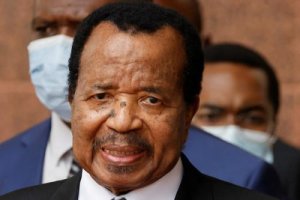President Paul Biya has opposed the privatization of the country’s incumbent telecoms operator, Camtel. The decision was the subject of a letter addressed on December 4, 2023, by the Secretary-General of the Presidency (SGPR) to the Minister of Finance (Minfi).
Ferdinand Ngoh Ngoh instructs Minister Louis Paul Motazé, also the president of the Interministerial Committee for the Rehabilitation of Public and Parastatal Enterprises, to suspend any rehabilitation plan aiming at privatizing Camtel or any segment of its operations.
The SGPR’s letter follows Minister Motazé’s appearance before the National Assembly’s Finance and Budget Committee on November 15, 2023, where he defended the 2022 budget settlement. Responding to questions about Camtel’s underwhelming performance compared to other telecom operators, the Finance Minister revealed the government’s intention to restructure the telecom giant into three entities, forming a holding.

“Referring to Camtel’s low level of competitiveness, given the dynamism observed in the telecommunications sector, the Finance Minister acknowledged that the company’s performance was not up to expectations. For this reason, an inter-ministerial committee has been set up to examine the restructuring of the company. The government is currently considering how to improve the company’s performance. It is envisaged that the company will be transformed into a holding company made up of three entities”, reads the report on the work of the National Assembly’s Finance and Budget Committee, on the defense of the 2022 Settlement Act by the Minister of Finance.
The report also mentions the plan to alleviate the significant burden on Camtel, including its 4,000 employees and a heavy debt of FCFA 600 billion. However, the minister did not explicitly mention privatization during his presentation to the parliamentarians.
Furthermore, sources close to Camtel’s rehabilitation discussions disclosed that a ministerial-level meeting took place to address the alarming situation of Camtel. Representatives from the Ministry of Posts and Telecommunications (Minpostel), the Ministry of the Economy (Minepat), and Camtel’s Director-General were present alongside the Minister of Finance (Minfi) and a representative from the Presidency. Contrary to claims of privatization, major proposals focussed on reinforcing the autonomy of business units (fixed, mobile, transport) under Camtel, reducing staff, and addressing the substantial debt.
Since 2020, Camtel has held three licenses, covering the operation of electronic communications transport networks, fixed communications networks, and mobile networks. The Finance Minister’s revelation of the transformation project into a holding with three subsidiaries corresponds to the specifics of these licenses.
In response to the President’s opposition to privatization, discussions arise about the suggested holding structure. A holding, or “mother company,” can have its assets predominantly or wholly owned by the state or its entities, maintaining the company in the public domain. However, assets in both the holding and its subsidiaries could also be majority or wholly owned by private operators, aligning with the concept of privatization.
This proposed option, which the President opposes according to the SGPR’s letter, appears more reassuring to many telecom operators in Cameroon. Critics argue that Camtel, operating as a wholesaler managing infrastructure leased by other actors, competes directly with retailers, such as mobile operators and internet service providers.
A 2017 report entitled “Cameroon Economic Memorandum” by the World Bank supports this perspective, suggesting the government ends the monopoly of companies like Camtel and Bolloré in sectors producing essential inputs for other activities.
During a workshop in March 2017 in the Cameroonian capital on determining reforms for improving the competitiveness of the ICT sector in Cameroon, the World Bank recommended transforming Camtel into a holding with two entities: one controlled by the state, managing infrastructure and fixed telephony networks; and another dedicated to mobile services and the marketing of home fiber optics, open to private investors.